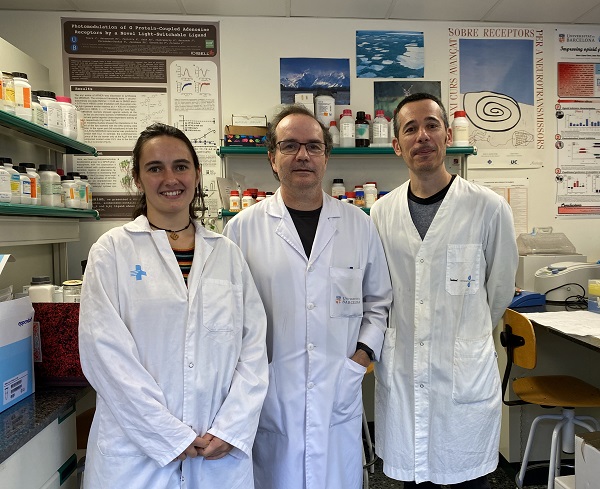Researchers identify a molecular mechanism associated with juvenile Parkinsonʼs

Parkinsonʼs disease affects 3% of population over 65 years old, and the average age of onset is 60. Regarding juvenile Parkinson, which represents the of all Parkisonʼs cases, the disease begins before 40 years old. Now, a group of researchers of the Faculty of Medicine and Health Sciences, the Institute of Neurosciences of the UB (UBNeuro) and the Bellvitge Biomedical Research Institute (IDIBELL), has deciphered, for the first time, the molecular mechanism by which a mutation of the adenosine type 1 receptor gene is associated with juvenile Parkinsonʼs.

Parkinsonʼs disease affects 3% of population over 65 years old, and the average age of onset is 60. Regarding juvenile Parkinson, which represents the of all Parkisonʼs cases, the disease begins before 40 years old. Now, a group of researchers of the Faculty of Medicine and Health Sciences, the Institute of Neurosciences of the UB (UBNeuro) and the Bellvitge Biomedical Research Institute (IDIBELL), has deciphered, for the first time, the molecular mechanism by which a mutation of the adenosine type 1 receptor gene is associated with juvenile Parkinsonʼs.
The team, led by Professor Francisco Ciruela (UB-IDIBELL-UBNeuro), focused on the study of the mechanistic field of the mutation of the brain receptor, previously defined as the potential cause for the early disease. The results, presented in the journal Biomedicine and Pharmacotherapy, reveal that the mutation reduced this receptorʼs ability to interact with other adenosine receptors —with the type 2receptor—, which would cause an increase in the neuronal circuitsʼ excitability in the brain region called the striatum.
“We propose that the inability of both adenosine receptors to interact would generate glutamatergic hyperexcitability in the neuronal circuits of the striatum, a key mechanism in the pathogenesis of juvenile Parkinsonʼs”, notes Francisco Ciruela, professor of the Department of Pathology and Experimental Therapeutics of the UB and head of the IDIBELL Research Group on Neuropharmacology and Pain.
An imbalance in the excitability of the neuronal circuit
The adenosine receptors are brain receptors assembled to G proteins and involved in motor functions. Previously, their involvement in neurodegenerative pathologies such as Parkinsonʼs disease had already been suggested.
The studied mutation affects the type 1 adenosine receptor, which has an inhibitory effect on its counterpart —the type 2 adenosine receptor— through which it facilitates the glutamate release and the circuitʼs excitability. According to the conclusions, the mutation would prevent the molecular and functional interaction of both adenosine receptors and, as a result, it would facilitate glutamate release, which would cause hyperexcitability in the striatum neuronal circuits.
The study includes the participation of research teams from the Autonomous University of Barcelona (UAB), the Luxembourg Institute of Health (LIH) and the National Institutes of Health (NIH) in Baltimore (United States).
Reference article:
Sarasola, L. I.; Llinàs del Torrent, C.; Pérez-Arévalo, A.; Argerich, J.; Casajuana-Martín, N.; Chevigné, A.; Fernández-Dueñas, V.; Ferré, S.; Pardo, L.; Ciruela, F. «The ADORA1 mutation linked to early-onset Parkinsonʼs disease alters adenosine A1-A2A receptor heteromer formation and function». Biomedicine and Pharmacotherapy, October 2022. DOI: 10.1016/j.biopha.2022.113896
